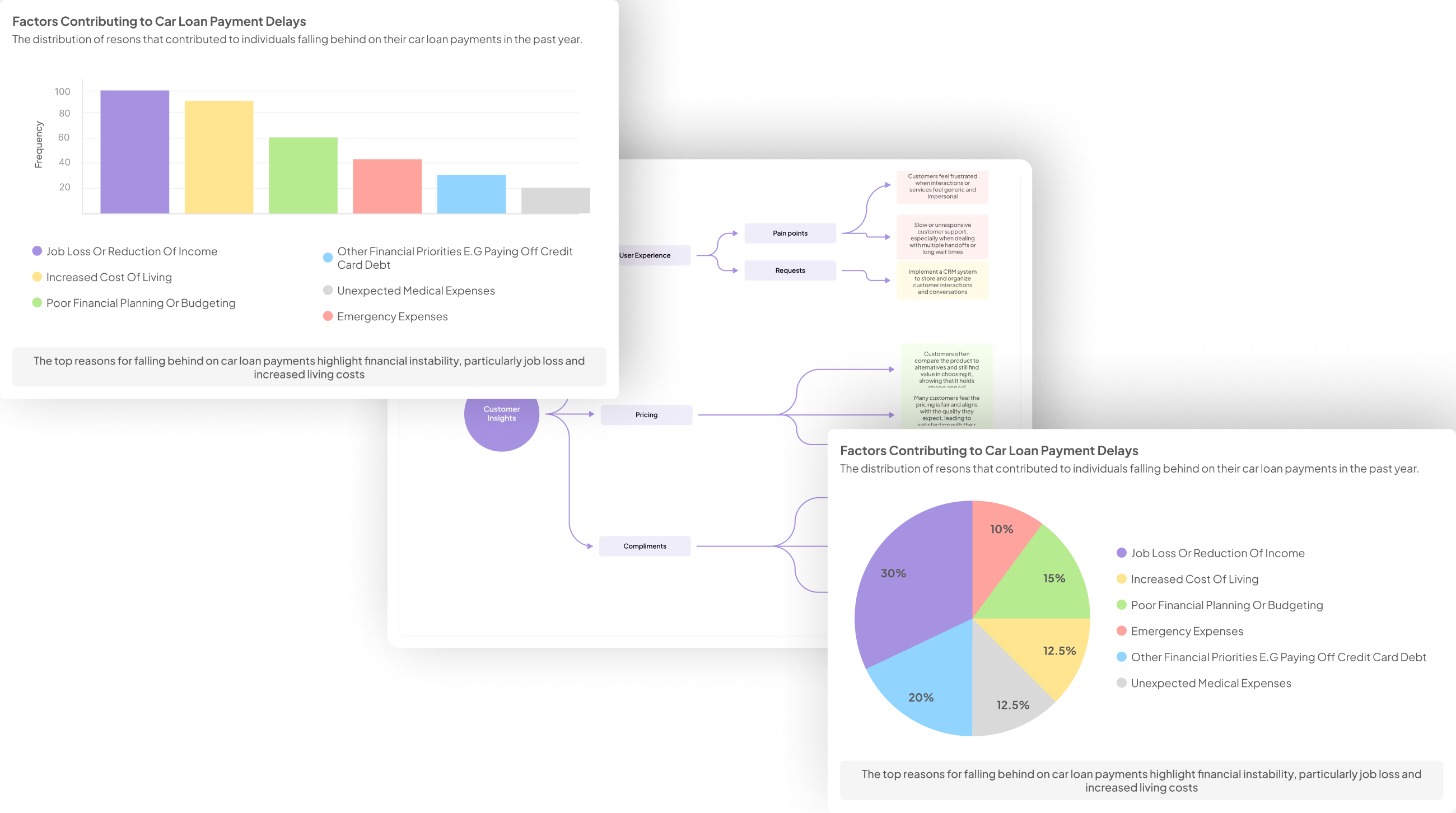Improving Collections with Call Center Analytics: Proven Tips
-
Hello Insight
- 10 min read
In the evolving world of call centers, the need to optimize collections analytics has never been greater. Organizations are recognizing that analyzing call data can dramatically enhance their collections strategies. By leveraging data-driven insights, companies can not only track their performance but also glean valuable information about customer interactions, preferences, and pain points. This approach allows businesses to tailor their collections practices more effectively, ultimately boosting recovery rates and improving customer satisfaction.
Optimizing collections analytics involves understanding key metrics that indicate success. It is essential to identify patterns and trends within the data that can guide decision-making processes. Furthermore, the use of predictive analytics can empower teams to anticipate customer behavior, thereby facilitating a more proactive approach to collections. By implementing these analytics strategies, call centers can enhance their operational effectiveness and deliver better results for their organizations.
Generate visualizations from your qualitative data. At Scale.

Harnessing Data: Optimizing Collections Analytics for Better Performance
Harnessing data effectively is vital to optimizing collections analytics, ultimately leading to improved performance. Central to this process is understanding key metrics, as these provide actionable insights for decision-makers. By regularly analyzing call center interactions, teams can identify patterns and trends that reveal customer behaviors, allowing for more tailored collection strategies. This understanding aids in creating a more responsive environment, ensuring communication aligns with the needs of both the business and the customers.
To optimize collections analytics further, implementing predictive analytics can be transformative. This approach allows organizations to anticipate customer behavior more accurately and adjust their strategies accordingly. By focusing on data-driven insights, businesses can make informed decisions, enhancing overall collection efforts. Furthermore, involving the call center team in this analytical process promotes a culture of ongoing improvement, enabling staff to engage proactively with data and drive better outcomes in collections.
Analyzing Call Center Data Effectively
Understanding how to analyze call center data effectively can be a game-changer for optimizing collections analytics. First, focus on identifying key metrics that drive performance, such as average handle time, call resolution rates, and customer satisfaction scores. By examining these metrics, you can uncover insights about your team's efficiency and customer interactions.
Next, look for patterns and trends in the data. For instance, analyzing calls across different demographics or time slots may reveal variations in customer inquiries and concerns. This information allows for more targeted training and adjustments in your collections strategies. By continuously monitoring these trends, you can adapt to changing customer behavior and refine your approach, ultimately leading to increased collection rates and more satisfied customers. These insights ensure that every call center interaction is informed and effective, which is crucial in driving collections success.
- Understanding Key Metrics
Key metrics are crucial in optimizing collections analytics, as they provide a clear framework for performance evaluation. First, it's essential to identify which metrics truly matter. Common metrics include call resolution rates, average handling time, and first-call closure rates. Tracking these metrics enables call center managers to gauge agent efficiency and overall effectiveness in collections.
Additionally, metrics can reveal patterns and highlight areas for improvement. For example, if a high percentage of calls lead to disputes, it might necessitate targeted training for the reps involved. Using these insights, management can refine strategies to enhance both agent performance and customer satisfaction. Ultimately, understanding key metrics allows organizations to make data-driven decisions, leading to improved collections outcomes.
- Identifying Patterns and Trends
Identifying patterns and trends in call center data is vital for enhancing collections processes. By strategically analyzing call records, collections teams can uncover recurring issues and behaviors exhibited by customers. Focusing on specific time frames, such as monthly or quarterly reviews, allows for a comprehensive understanding of customer interactions, highlighting critical areas for improvement.
To effectively identify these patterns, consider three essential steps:
- Data Aggregation: Collect a significant volume of call data over a defined period. This could involve transcribing calls or using call center software analytics.
- Trend Analysis: Look for common themes, such as customer objections or frequently mentioned pain points. Analyze how these themes fluctuate based on different factors like seasonality or product changes.
- Insight Reporting: Summarize the findings in a clear, actionable report that outlines key insights and recommendations. Presenting this information effectively ensures it drives informed strategic decisions.
Utilizing these techniques will help teams in optimizing collections analytics, ultimately leading to improved performance and customer satisfaction.
Implementing Predictive Analytics in Collections Strategy
Implementing predictive analytics in collections strategy involves a systematic approach to understanding customer behaviors and refining decision-making processes. By focusing on historical data patterns, organizations can anticipate customer actions, enhancing their ability to pursue collections effectively. The first step is to analyze past interactions and identify trends that reveal customer payment behaviors, allowing call centers to predict default risks and tailor their communication strategies accordingly.
Next, integrating predictive analytics tools can significantly improve decision-making capabilities. Utilizing data insights enables call center teams to identify high-value accounts and prioritize them for follow-up. This method not only optimizes collections analytics but also fosters a proactive rather than reactive approach to debt collection. The ultimate goal is to streamline processes, reduce operational costs, and enhance recovery rates through informed predictions and actionable insights. By embedding predictive analytics into collections strategy, organizations can achieve better performance and maintain healthier financial standings.
- Anticipating Customer Behavior
Understanding customer behavior is essential for any successful collections strategy. When call center agents can anticipate the needs and reactions of customers, they can tailor their approaches accordingly. By doing this, they can enhance customer interactions and increase the likelihood of successful collections. Agents should focus on actively listening and engaging with customers to gather insights that reveal patterns in payment behavior.
To effectively anticipate customer behavior, consider the following key aspects:
Historical Payment Patterns: Analyze past customer interactions to identify trends that indicate when payments are typically made or delayed.
Customer Segmentation: Classify customers based on behavior, demographics, or payment history. This allows agents to devise tailored strategies for each segment.
Feedback Mechanisms: Establish channels for customers to share their experiences and concerns. This information can guide agents in adapting their strategies effectively.
Emotional Cues: Train agents to recognize emotional cues during calls. Understanding customer frustrations or doubts can help in addressing issues promptly.
By integrating these practices into your call center operations, you enhance the process of optimizing collections analytics. This ultimately leads to more effective interactions and improved collections results.
- Improving Decision-Making with Data Insights
In improving decision-making with data insights, organizations tap into existing data to elevate their collections strategies. By analyzing call center interactions, teams can identify trends that guide effective responses to customer behaviors. Each interaction generates valuable data, revealing insights that can transform how collection agencies operate.
Integrating these insights into decision-making processes enhances not only efficiency but also customer engagement. Decision-makers can forecast customer behavior more accurately, tailoring their strategies accordingly. For example, understanding which communication methods yield the best results enables teams to prioritize their approaches. Furthermore, leveraging historical data allows staff to address client concerns proactively, increasing the likelihood of successful interactions. Ultimately, a strong emphasis on optimizing collections analytics will guide better outcomes in collections efforts, turning data into actionable intelligence that drives results.
Evaluate Performance on Customer Calls for Quality Assurance.
Strategies for Success: How Optimizing Collections Analytics Can Improve Results
Optimizing collections analytics is key to enhancing the effectiveness of your call center operations. To achieve success, organizations should focus on two core strategies. First, training and empowering your call center team ensures they are well-versed in analytical tools. A knowledgeable staff can leverage analytics effectively to boost collections rates and improve customer interactions.
Second, utilizing real-time data fosters immediate action and responsive strategies. Implementing dashboards that provide instant insights can help teams quickly assess performance metrics and necessary adjustments. With real-time data at their fingertips, call center employees can adapt strategies based on current trends and emerging patterns. These approaches not only help in optimizing collections analytics but also create a proactive environment, allowing teams to address challenges as they arise and improve overall results in the long run.
Training and Empowering the Call Center Team
Training the call center team is a crucial step in enhancing their performance and productivity. By providing comprehensive training on analytical tools, staff can better understand the metrics that drive successful collections. Regular training sessions equip team members with the knowledge to navigate data effectively and utilize insights to their advantage. Additionally, fostering a culture that encourages data-driven decision-making will empower representatives to approach customer interactions with confidence.
To further enhance this training, regular evaluations and feedback are essential. Implementing a structured assessment routine, such as secret shopping calls or performance reviews, ensures that each team member meets established standards. Tailoring training sessions to address specific gaps that emerge from these evaluations enhances overall effectiveness. Ultimately, a well-trained call center team, grounded in optimizing collections analytics, fosters a proactive approach to customer interactions, leading to improved collections outcomes.
- Providing Comprehensive Training on Analytical Tools
Comprehensive training on analytical tools is essential for optimizing collections analytics and empowering call center staff. This training focuses on equipping agents with the necessary skills to interpret data effectively and make informed decisions. By understanding the features of analytical tools, agents can identify patterns and trends that drive better performance in collections.
To cultivate a data-driven culture, training programs should cover several key aspects. First, practical workshops can enhance agents' proficiency in using dashboards and data visualization tools. Next, case studies that showcase successful data application in improving collections strategies can inspire and motivate staff. Finally, ongoing mentoring sessions will ensure that agents continually refine their analytical abilities, promoting adaptability in a fast-paced environment. By investing in comprehensive training, organizations can transform their call center teams into data-savvy professionals capable of improving collections outcomes.
- Encouraging Data-Driven Decision-Making Among Staff
Fostering a culture of data-driven decision-making among staff is crucial for enhancing call center efficiency. When team members understand and use the data at their disposal, they can identify issues and opportunities more effectively. Encouraging such practices can start with comprehensive training sessions, where staff are equipped with the necessary analytical skills. Effective training ensures they feel confident in interpreting the data, which ultimately leads to better outcomes in collections.
Moreover, establishing regular team discussions around insights from collections analytics helps create an informed team that collaborates toward common goals. Setting clear expectations about leveraging insights from data encourages accountability and a proactive mindset. When staff members are motivated to utilize optimizations and analytics, they contribute significantly to improving collections performance. Ultimately, a data-centric approach empowers staff, enhances decision-making, and can significantly enhance overall results in collection efforts.
Leveraging Real-Time Data for Immediate Action
Real-time data can significantly enhance the effectiveness of collections strategies in call centers. By utilizing dashboards that present current metrics, agents can make immediate adjustments to their approach. Having access to live insights allows team members to tailor conversations based on customer behavior trends, leading to more meaningful interactions. This responsiveness can dramatically increase recovery rates and customer satisfaction.
To optimize collections analytics effectively, consider the following key actions:
Utilizing Dashboards: Interactive interfaces can provide agents with instant access to essential information, such as payment histories and outstanding balances. This equips agents to address customer concerns promptly.
Adapting Strategies: Real-time data allows teams to quickly pivot their techniques based on ongoing trends or emerging issues. For example, if a specific demographic shows an uptick in delinquencies, targeted strategies can be deployed immediately.
By prioritizing these elements, organizations can create a more agile and responsive collection environment, enhancing overall effectiveness.
- Utilizing Dashboards for Quick Insight
Dashboards serve as a vital tool in optimizing collections analytics, allowing teams to visualize key metrics at a glance. By leveraging these dashboards, call center staff can quickly access data relevant to their daily operations. This accessibility empowers team members to identify trends and assess performance without the need for extensive training or deep data analysis. The intuitive interface of a well-designed dashboard allows for rapid decision-making and swift actions, enhancing overall effectiveness.
For successful implementation, it’s essential to focus on several key aspects. First, ensure that dashboards are tailored to display metrics that matter most to your team. Customizable views can highlight specific call outcomes, customer interactions, and other relevant analytics. Second, regular updates can keep all team members informed about changes in collections performance. By facilitating a culture of data-driven insights, dashboards ultimately equip call center teams to respond proactively, improving collections strategies with greater efficiency and accuracy.
- Adapting Strategies Based on Real-Time Data Updates
In today's fast-paced call center environment, adapting strategies based on real-time data updates is crucial for optimizing collections analytics. Real-time insights not only illuminate current customer behaviors but also empower teams to make informed decisions quickly. For instance, if a particular collection method is falling short, immediate adjustments can be made to pivot strategies effectively. This kind of adaptability enhances responsiveness to changing circumstances, significantly improving recovery rates.
An effective way to implement real-time updates is by utilizing intuitive dashboards. These tools provide agents with immediate visibility into relevant metrics, enabling them to react promptly to shifts in customer engagement or sentiment. Additionally, feedback loops from ongoing calls can reveal patterns that necessitate immediate strategy alterations. By cultivating an agile approach that prioritizes data-driven decisions in the moment, call centers can ultimately drive improvements, ensuring that collections processes remain efficient and effective.
Conclusion: Mastering the Art of Optimizing Collections Analytics
Mastering the art of optimizing collections analytics requires a blend of effective data management and strategic insights. By focusing on key metrics, organizations can better understand customer behaviors and preferences, ultimately enhancing the collections process. Strong analytics frameworks allow for the identification of patterns in caller interactions, which can guide call center initiatives and refine collection approaches.
Moreover, embracing predictive analytics offers valuable foresight into customer actions. This proactive stance ensures that teams are equipped to address potential challenges before they escalate. As organizations strive to improve collections, mastering the art of optimizing collections analytics is fundamental to unlocking meaningful improvements and achieving lasting success.






